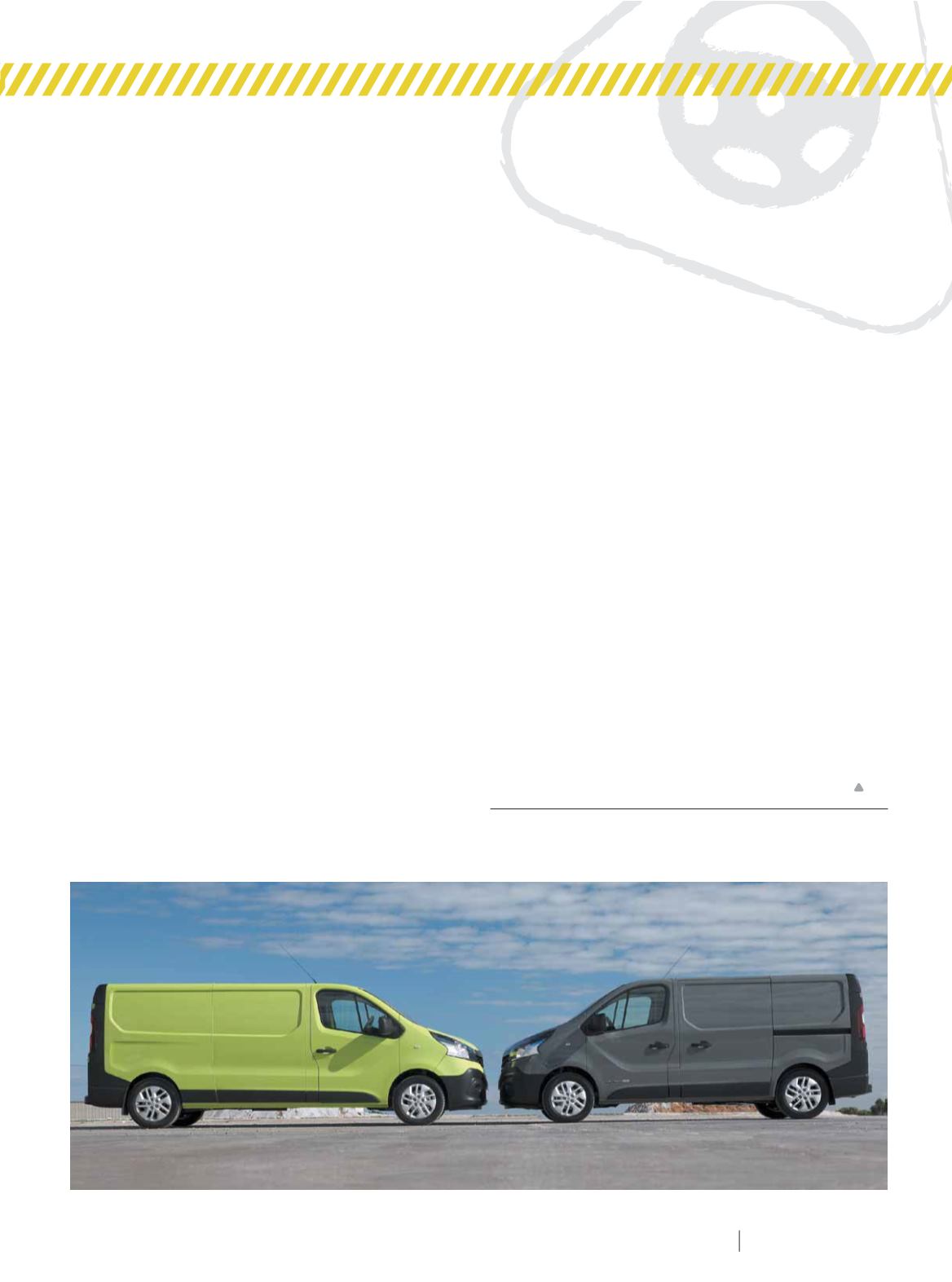

P L UMB I N G CO N N E C T I O N
S P R I N G 2 0 15
1 2 5
R
enault’s third-generation Trafic delivery van has
arrived in Australia, offering a comprehensive
redesign inside and out and, not least of all, an all-
new 1.6L diesel engine with improved fuel efficiency and
performance.
There is no longer an automatic transmission available on
Trafic, leaving Renault Australia to soldier on with the new
‘R9M’ engine family, which is offered in two states of tune but
combines only with a six-speed manual gearbox.
Both short and long wheelbase variants remain available
– measuring 3,098mm and 3,498mm respectively – with the
SWB (dubbed L1H1) offering either engine and the LWB (L2H1)
going it alone with the high-output unit.
This top-spec twin-turbocharged ‘Energy dCi 140’
produces 103kW of power at 3,500rpm and 340Nm of
torque from just 1,500rpm (80% of which is available from
1,250rpm). Fuel consumption on the combined cycle comes
in at 6.2L/100km, aided by automatic engine idle-stop and
regenerative braking systems, among a host of economy-
enhancing technical features.
At the entry level, the ‘dCi 90’ delivers the same economy
figures with the lower output, which is 66kW and 260Nm (each
produced at the same revs as the dCi 140).
Extended front and rear overhangs have liberated more
space throughout the Trafic, with load lengths now stretching
to 3,750mm (SWB) or 4,150mm (LWB) via a new bulkhead
flap arrangement – establishing “a new benchmark for the
market”, according to Renault, as longer items extend into the
cabin – while the bulkhead itself has been repositioned 30mm
further back to liberate more space for passengers.
The cargo area measures 1,387mm high and 1,662mm wide
across the range, with access gained through an unglazed
left sliding door or, at the back, a conventional glazed tailgate
or 180º rear barn doors. Significantly, the cargo area layout
remains the same as the previous generation, enabling
tradespeople to transfer customised fittings and equipment
over to the new model.
Maximum cargo volume is 5.2m
3
on the SWB, and 6.0m
3
on the longer version, while payload ranges from 1,235kg to
1,274kg, depending on the variant. Maximum towing capacity
is 2,000kg.
Standard features include three-abreast seating, full
driver’s seat and steering wheel position adjustment, air
conditioning, electric windows/mirrors, remote central
locking, cruise control (with speed limiter) and Bluetooth
audio/phone and USB connectivity.
On the safety front there are dual front airbags, rear
parking sensors, hill-start assist, electronic stability and
traction control (including an advanced Grip Xtend system),
and ABS brakes with EBD and brake assist.
Specifying the high-output engine brings extra equipment,
including automatic headlights/wipers, front fog lights
(with cornering function), a rear-view camera, leather-clad
steering wheel, CD/MP3 radio and dual passenger bench with
fold-down centre seat workstation that includes a detachable
A4 clipboard, laptop storage and under-seat storage
compartment. The aforementioned load-through flaps and
rear barn doors also kick in here.
Renault Australia is offering three factory-fit option
packs on the twin-turbo models, providing scope for
buyers to beef up the comfort, convenience and/or
technology specification.
Pricing starts from $33,490 plus on-road costs for the L1H1
dC1 90, with the dCi 140 adding $3,500 on the SWB. The LWB
L2H1 dCi 140 starts a little further upstream at $38,490.
Renault Australia
www.renault.com.auRENAULT TRAFIC
















